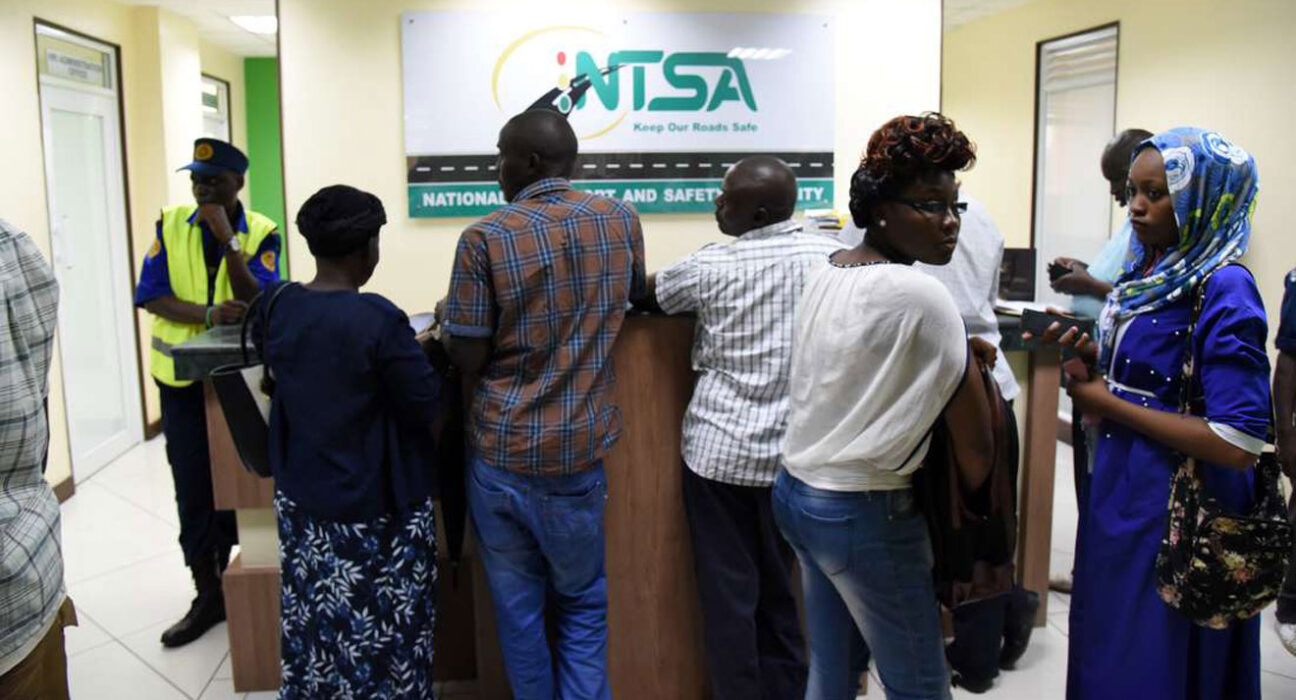In Kenya, the process of re-registering ex-civilian vehicles to Government of Kenya (GK) status is a critical procedure for organizations, state agencies, and institutions seeking to integrate vehicles into official government use. The National Transport and Safety Authority (NTSA) oversees this process through its online portal, ensuring compliance with legal and regulatory frameworks. With the increasing demand for transparency and efficiency in vehicle registration, understanding the requirements and steps for re-registering ex-civilian vehicles to GK plates is essential for seamless compliance. This comprehensive guide provides an in-depth look at the NTSA portal process, requirements, and practical tips to ensure a smooth transition, tailored to the Kenyan context in 2025.
Why Re-Register Ex-Civilian Vehicles to GK Status?
Re-registering a vehicle from civilian to GK status is often necessary when a vehicle is acquired by a government entity, donated to a state institution, or repurposed for official use. GK plates signify that a vehicle is owned or operated by the Government of Kenya or an authorized entity, such as parastatals, county governments, or registered organizations working on behalf of the state. This process ensures proper documentation, legal compliance, and eligibility for government-specific exemptions, such as certain tax benefits or operational privileges.
Key reasons for re-registration include:
- Donation or Transfer: Vehicles donated to government institutions or acquired through transfers require re-registration to reflect their new ownership status.
- Compliance with Regulations: The NTSA mandates that vehicles used for official government purposes bear GK plates to ensure traceability and accountability.
- Operational Efficiency: GK plates allow vehicles to access specific privileges, such as exemptions from certain tolls or priority in official duties.
- Security and Accountability: Re-registration ensures that vehicles are properly documented, reducing risks associated with misuse or fraudulent activities.
Understanding the NTSA Portal and Its Role in Re-Registration
The NTSA portal, accessible via the eCitizen platform, is the central hub for vehicle-related services in Kenya, including re-registration of ex-civilian vehicles to GK status. In 2025, the portal has been optimized for user-friendliness, but challenges such as pending applications or technical glitches persist for some users. The portal integrates with other government systems to verify ownership, tax compliance, and vehicle details, making it a one-stop solution for re-registration.
Benefits of Using the NTSA Portal
- Streamlined Process: The portal centralizes documentation and payment processes, reducing the need for physical visits to NTSA offices.
- Transparency: Real-time tracking of application status ensures users stay informed.
- Security: Integration with KRA and DCI systems verifies authenticity, reducing fraud risks.
- Accessibility: Available 24/7, the portal allows users to initiate applications at their convenience.
Requirements for Re-Registering Ex-Civilian Vehicles to GK
The NTSA has outlined specific requirements for re-registering ex-civilian vehicles to GK status. These requirements ensure that the vehicle’s ownership, condition, and purpose are verified before issuing GK plates. Below is a detailed breakdown of the mandatory documents and steps.
1. Letter from the Donor (If Applicable)
If the vehicle is donated to a government entity or organization, a formal letter from the donor is required. This letter should:
- Clearly state the intent to donate the vehicle.
- Include details such as the vehicle’s make, model, chassis number, and engine number.
- Be signed and dated by the donor or their authorized representative.
- Be addressed to the receiving entity and NTSA for official processing.
This requirement is critical for donated vehicles, as it establishes the legal transfer of ownership and prevents disputes.
2. Request Letter for Conversion
A formal request letter addressed to the NTSA is mandatory. This letter should:
- Be written on the organization’s official letterhead.
- Specify the purpose of the vehicle’s use under GK status (e.g., official government duties, county operations).
- Include vehicle details, such as registration number, chassis number, and engine number.
- Be signed by an authorized representative of the requesting organization.
3. Tape Lift of Chassis and Engine Numbers
The Directorate of Criminal Investigations (DCI) plays a crucial role in verifying the vehicle’s identity. A tape lift of the chassis and engine numbers must be obtained from a DCI office and submitted to NTSA. This step ensures that the vehicle’s details match the records and prevents cases of tampering or fraud.
- Process: Visit a DCI office with the vehicle for physical inspection. The DCI will provide a tape lift certificate or report, which must be uploaded to the NTSA portal.
- Importance: This step verifies the vehicle’s authenticity, addressing issues like untransferred vehicle registrations leading to security risks.
4. Copies of PIN and Certificate of Incorporation
Both the donor and receiving organizations must provide:
- KRA PIN Certificates: To verify tax compliance and legal entity status.
- Certificates of Incorporation: To confirm that both organizations are registered under Kenyan law.
These documents ensure that the transfer is between legitimate entities and align with NTSA’s regulatory framework.
5. Original Certificate of Registration
The original certificate of registration (logbook) of the ex-civilian vehicle must be submitted to NTSA. This document proves the vehicle’s current ownership and registration status. Ensure that:
- The logbook is in the name of the donor or transferring entity.
- All details in the logbook match the vehicle’s physical and documented specifications.
6. Surrender of Civilian Number Plates
The civilian number plates must be surrendered at an NTSA-designated collection point. This step is crucial to finalize the transition to GK plates and prevent misuse of old plates. Failure to surrender plates or transfer registration can lead to complications, including legal issues.
- Process: Visit an NTSA office or authorized collection point to surrender the plates. Obtain a receipt or acknowledgment for submission.
- Cost: Plate-related fees, such as for KD plates, are relatively affordable (e.g., Ksh 1,500), though specific costs for GK plates may vary.
Step-by-Step Guide to Re-Registering on the NTSA Portal
The NTSA portal simplifies the re-registration process, but attention to detail is critical to avoid delays. Below is a step-by-step guide to navigate the process in 2025.
Step 1: Access the eCitizen Portal
- Visit the eCitizen portal (ecitizen.go.ke) and log in using your credentials.
- If you don’t have an account, create one using your KRA PIN and personal details.
- Navigate to the NTSA services section.
Step 2: Select Vehicle Re-Registration Service
- Under NTSA services, choose the option for “Vehicle Registration” or “Change of Particulars.”
- Select “Re-Registration to GK Status” from the available options.
Step 3: Upload Required Documents
- Upload scanned copies of:
- Donor letter (if applicable).
- Request letter for conversion.
- DCI tape lift certificate.
- KRA PIN and certificates of incorporation.
- Original certificate of registration.
- Ensure all documents are clear, legible, and in the required format (PDF or JPEG).
Step 4: Pay the Re-Registration Fees
- The NTSA portal will generate an invoice for the re-registration fees. As of 2025, fees vary based on vehicle type and purpose, but users have noted affordable costs for related services.
- Pay via M-Pesa, bank card, or other available methods on the eCitizen platform.
- Retain the payment confirmation for reference.
Step 5: Surrender Civilian Plates
- Visit an NTSA office or designated collection point to surrender the civilian plates.
- Submit the receipt or acknowledgment to the NTSA portal to confirm completion.
Step 6: Track Application Status
- Use the NTSA portal to monitor your application’s progress.
- Address any queries or additional requirements promptly to avoid delays, as issues like pending applications can cause setbacks.
Step 7: Collect GK Plates
- Once approved, NTSA will issue new GK plates.
- Collect the plates and updated logbook from the designated NTSA office.
- Verify that all details on the new logbook are accurate.
Common Challenges and How to Overcome Them
Despite the NTSA portal’s efficiency, users may encounter challenges during re-registration. Below are common issues and solutions:
- Pending Applications: Previous applications (e.g., for new generation plates) may block new requests.
- Solution: Contact NTSA support via the portal or visit an office to resolve pending applications.
- Document Rejections: Incomplete or illegible documents can delay processing.
- Solution: Double-check all uploads for clarity and compliance with NTSA guidelines.
- Technical Glitches: Portal downtime or errors can disrupt applications.
- Solution: Try accessing the portal during off-peak hours or contact NTSA’s helpline.
- Delayed Plate Issuance: High demand for GK plates may cause delays.
- Solution: Track your application regularly and follow up with NTSA if delays exceed the standard processing time (typically 7-14 days).
Practical Tips for a Smooth Re-Registration Process
To ensure a hassle-free experience, consider these tips:
- Verify Vehicle Details: Cross-check the chassis and engine numbers before submitting the tape lift to avoid discrepancies.
- Engage Professionals: For complex cases, consult a licensed agent or lawyer familiar with NTSA processes.
- Plan Ahead: Initiate the process early to account for potential delays, especially for time-sensitive government operations.
- Stay Updated: Monitor NTSA announcements for updates on fees, requirements, or portal changes, as regulations evolve.
The Importance of Compliance in 2025
Re-registering ex-civilian vehicles to GK status is more than a bureaucratic requirement; it’s a step toward accountability and security in Kenya’s transport sector. Incidents like the 2025 Mirali case, where an untransferred vehicle was misused, underscore the need for proper registration. By adhering to NTSA guidelines, organizations contribute to a safer, more transparent transport ecosystem.
Broader Implications
- Economic Impact: Proper registration supports tax compliance and government revenue collection.
- Security: Verified vehicles reduce risks of misuse in criminal activities.
- Public Trust: Transparent processes build confidence in government operations.
Re-registering ex-civilian vehicles to GK status on the NTSA portal is a structured yet critical process for organizations in Kenya. By understanding the requirements—such as donor letters, DCI tape lifts, and plate surrender—and following the step-by-step guide, applicants can navigate the process efficiently. Despite challenges like portal glitches or pending applications, proactive planning and compliance with NTSA regulations ensure success. In 2025, as Kenya continues to modernize its transport systems, adhering to these guidelines not only ensures legal compliance but also contributes to a safer and more accountable transport landscape.
For further assistance, visit the NTSA portal on ecitizen.go.ke or contact NTSA’s customer support. Stay informed, stay compliant, and drive Kenya forward.





